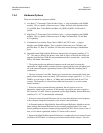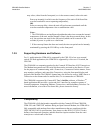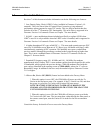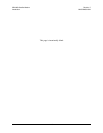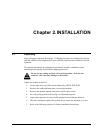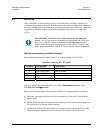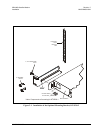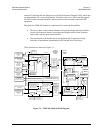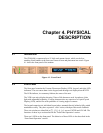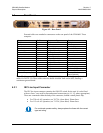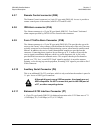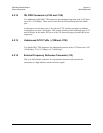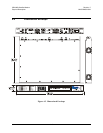
3–1
Chapter 3. FUNCTIONAL
DESCRIPTION
The CDM-600 has two fundamentally different types of interface - IF and data.
• The data interface is a bi-directional path which connects with the customer’s
equipment (assumed to be the DTE) and the modem (assumed to be the DCE).
• The IF interface provides a bi-directional link with the satellite via the uplink and
downlink equipment.
Transmit data is received by the terrestrial interface where line receivers convert the
clock and data signals to CMOS levels for further processing. A small FIFO follows the
terrestrial interface to facilitate the various clocking and framing options. If framing is
enabled, the transmit clock and data output from the FIFO pass through the framer, where
the overhead data (IDR, IBS, D&I or EDMAC) is added to the main data. Otherwise, the
clock and data are passed directly to the Forward Error Correction encoder. In the FEC
encoder, the data is differentially encoded, scrambled, and then convolutionally encoded.
Following the encoder, the data is fed to the transmit digital filters, which perform
spectral shaping on the data signals. The resultant I and Q signals are then fed to the
BPSK, QPSK/OQPSK, 8-PSK, 8-QAM, or 16-QAM modulator. The carrier is generated
by a frequency synthesizer, and the I and Q signals directly modulate this carrier to
produce an IF output signal.
The RX-IF signal is translated directly to baseband, using the carrier recovery VCO. This
is a complex mix, resulting in the signal once more being split into an in-phase (I) and a
quadrature (Q) component. An AGC circuit maintains the desired signal level constant
over a broad range. Following this, the I and Q signals are sampled by high-speed (flash)
A/D converters. All processing beyond this conversion is purely digital, comprising a
Costas loop, that performs the functions of Nyquist filtering, carrier recovery, and symbol
timing recovery. The resultant demodulated signal is fed, in soft decision form, to the
selected FEC decoder (which can be Viterbi, Sequential, TCM, Reed-Solomon, Turbo,
LDPC if installed). After decoding, the recovered clock and data pass to the de-framer (if
IBS, IDR, D&I or EDMAC framing is enabled) where the overhead information is



